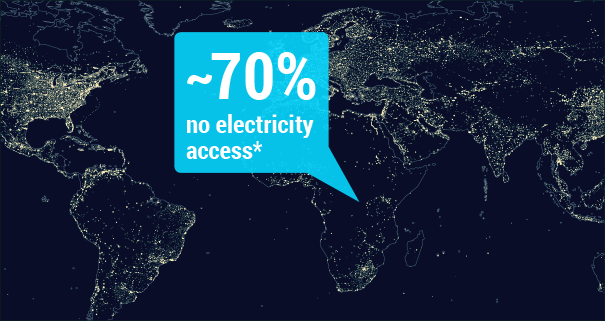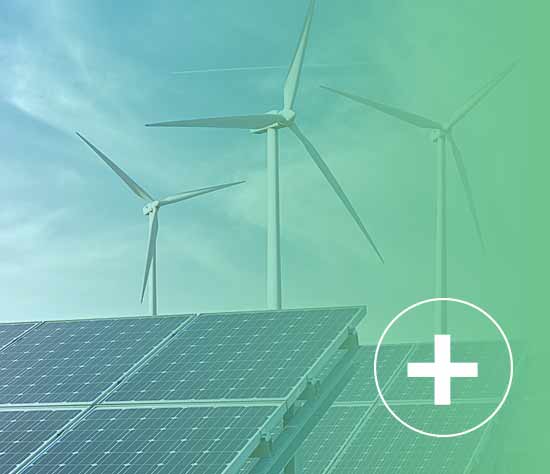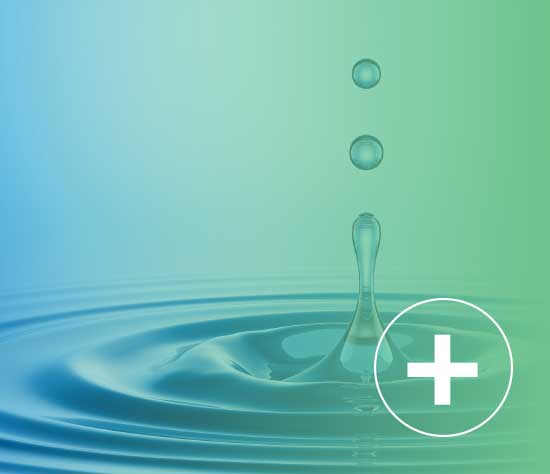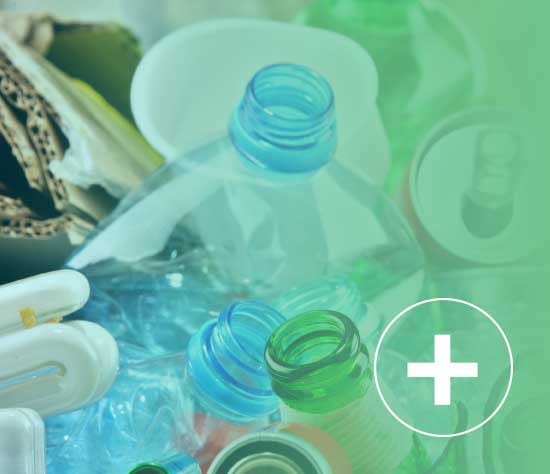Water and Environment Industry
Energy
Access to modern energy services is an important element for reducing poverty and improving the lives of the world’s poorest. Africa trails behind all other regions in terms of modern energy access and consumption, with its citizens relying heavily on traditional biomass such as firewood, charcoal and dung. Sub-Saharan Africa (excluding South Africa) has the lowest electrification rate in the world: nearly half a billion people – almost 70% of the population – are without access to electricity. Sub-Saharan Africa has the world’s highest “energy gap” (the percentage of people using little or no electricity, see map), and great potential for renewable energy supply, yet most opportunities for renewable energy options remain unexplored.

*Sub-Saharan Africa (excluding South Africa) has the lowest electrification rate in the world: nearly half a billion people – almost 70% of the population – are without access to electricity.
Africa has world-class solar potential, a vast belt of clean geothermal reserves, strong winds, and great potential for micro hydro and no-dam hydro. The solar potential is especially huge, with an average of 325 days of sunlight for the majority of the countries and 80% of land in Sub-Saharan Africa receiving almost 2000kWh per square meter per year of solar energy.
The continent’s wind power potential is also tremendous along its large coastline, especially in the North and South. Geothermal energy is also abundant along the rift valley countries that include Eritrea, Ethiopia, Djibouti, Kenya, Uganda and Zambia. Geothermal potential is estimated at 15,000MW and currently less than 3000MW is being exploited. Micro-hydro plants are another good option for large parts of Africa. More rural Africans live closer to a river than to the grid, and communities themselves can build and manage small-scale hydro. The Joint Research Center found that nearly 30% of Africa’s population lives in areas where mini-grids based on mini-hydropower projects would be the cheapest source of electricity. Renewables also offer good potential for permanent job creation, which large infrastructure projects do not.
Water
At first glance, Africa appears to be endowed with abundant water resources. It has big rivers, large lakes, vast wetlands, and limited but widespread groundwater. Much of this is located in the Central African sub-region and in the island countries. Africa has 17 rivers with catchments areas greater than 100 000 kM2 ; and it has more than 160 lakes larger than 27 kM2, most of which are located around the equatorial region and the sub-humid East African Highlands within the Rift Valley. The continent has a huge potential for energy production through hydropower (1.4 million GWh per year). Disregarding temporal and spatial climate variability, Africa has abundant rainfall and relatively low levels of withdrawals of water for the three major uses of water - agriculture, community water supply and industry -which are estimated to be about 3.8% of total annual renewable water resources.
Rainfall in Africa
At sub regional level, the spatial distribution of rainfall is varied. The highest rainfall occurs in the Island countries (1,700 mm per year), the Central African countries (1,430 mm), and the Gulf of Guinea (1,407 mm). The lowest precipitation occurs in the northern countries where average annual rainfall is only 71.4 mm. Internal Renewable Resources.
At continental level, renewable water resources constitute only about 20 percent of total rainfall. In the Sudano-Sahelian and Southern African subregions, the figures are 5.9% and 9.25 respectively. This may reflect high losses of rainwater. These losses may occur, in part, through evaporation of surface waters or through plants. The low values of the internal renewable resources also show that there is room for improvement in conservation of rainwater. More importantly, they account, in part, for the endemic drought in parts of the continent.
MAJOR EXHIBIT CATEGORIES:
Environment

Renewable Energy

Water

Waste & Recycling

Others

Environment

- Air Quality
- Eco-friendly Products
- Green Buildings and Energy Efficiency
- Green Transportation
- Testing, Analysis and Certification
- Waste Management and Recycling
- Water Treatment and Quality Management
- Environmental Protection Services and Research
Renewable Energy

- Solar Energy
- Wind Energy
- Bio Energy
- Energy Storage
- E-mobility
Water

- Hydraulic engineering and well construction
- Construction of water and wastewater treatment plants
- Water supply and sewerage systems
- Mechanical engineering and plant engineering in water Management
- Refuse management and recycling
- Generating energy from secondary raw and waste Materials
- Street cleaning, maintenance and winter road services
- Management of hazardous substances
- Flue-gas scrubbing and air extraction, air-pollution Control
- Water and recycling services
- Analysis and laboratory techniques for water and Recycling
- Education, research and technology transfer
Waste & Recycling

- Composting Systems / Components
- Construction & Demolition Waste / Scrap Recycling
- Incineration / Gasification / Thermal Technologies
- MRFs / Transfer Stations / Storage / Containers
- Recycling Equipment / Services
- Trucks & Transportation Equipment / Heavy Equipment
- Waste Treatment / Disposal
- Software / Technology / Education
Others

- Government & Authorities
- Service & Media



